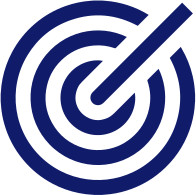Easy-to-read home
Gas-VI. Guide to independent living support assessment.

OBJECTIVES OF THE GUIDE
The aim of the guide is to analyse the support received
by people with intellectual disabilities
who live independently.
To carry out this study, the opinions of the professionals are collected
and also the opinions of people with intellectual disabilities themselves.
The guide is implemented individually.
This guide is based on the Convention on the Rights
of Persons with Disabilities
elaborated by the United Nations.
At this convention it was agreed that people with disabilities
must be involved in the decisions that affect their lives,
including those regarding the supports they receive.
The guide will make improvement recommendations
so that the supports are based on what was agreed
at this Convention.
HOW IS THE GUIDE ORGANISED?
The guide consists of two forms:
- a form for people who receive support,
- another form for professionals who give support.
The guide is based on the social inclusion model
by the authors Simplican, Leader, Kosciulek and Leahy
which is divided into 5 levels.
The GAS-VI guide is organised in 4 dimensions
or levels:

Individual dimension
In this dimension
the aspects related to the own person are studied:
age, health, emotions, aspirations and personal desires.

Interpersonal dimension
This dimension studies the person's relationships
with family, friends, sentimental partner and professionals.

Organizational dimension
This dimension studies the organisation of the institution
in charge of giving the support.

Comunity dimension
This dimension studies what has to do with the community
such as the neighbourhood, culture, and means of transport.
Within each dimension or level there are some areas.
And within the areas there are detailed some indicators
and some items.
- Indicators: These are data that can be observed
and calculated.
They are used to analyse the current state and its evolution through time. - Items: These are information units
such as questions.
HOW WAS THE GUIDE DEVELOPED
The Guide is part of two projects
that have been funded by the Ministerio de Economía, Industria y Competitividad (Spanish Ministry of Economy,
Industry and Competitiveness:
- Study project on the independent life of people
with intellectual disabilities.
This project is part of the Society Challenges programme. - Project on the creation and organization
of support social networks
of people with intellectual disabilities
This project is part of the Spanish programme
of Research, Development and Innovation
Oriented to the Challenges of Society.
Both projects have been developed by the Diversity Research Group
at the University of Girona.
The coordinators of the projects are Maria Pallisera
and Judit Fullana.
Once the study is done, some characteristics of the support
to benefit the independent life are detailed
following the 2006 Convention on the Rights of Persons with Disabilities.
A first version of the guide addressed to the professionals is made
and also a validation of it.
In 2018, a working day is organized
with the participation of 23 professionals from 10 different organisations
who work for people with intellectual disabilities in Catalonia.
These organisations are:
- Down Lleida.
- Fundació Altem.
- Fundació Astres-Plataforma Educativa.
- Fundació Astrid 21.
- Fundació Catalana de la Síndrome de Down.
- Fundació Estany.
- Fundació Pere Mitjans.
- Fundació Privada el Vilar Fundació Ramon Noguera.
- Fundació TRESC.
- Taller Alba.
Professionals participate in 4 working groups
and study the questions in the guide.
Once the guide for professionals is finished,
the guide for the people who receive the support is developed.
This guide is elaborated by the members of the Diversity Research Group
with the support of their Advisory Committee.
The Advisory Committee is composed of people with intellectual disabilities
who collaborate as advisors to the Diversity Research Group.
They also do their own studies with the help of the researchers
in the Diversity Research Group.
In September 2018, the Advisory Committee
reviews the areas of the guide
and expose important questions to evaluate the support
that people with intellectual disabilities receive
at home or other living places.
In 2021, the Ministerio de Ciencia e Innovación (Spanish
Ministry of Science and Innovation),
through a call for projects,
donated some money to develop
and validate the GAS-VI guide.
The following people participated
in the development of the guide:
- Maialen Beltran,
- Ivan Castro,
- Monte Castro,
- Gemma Diaz-Garolera,
- Judit Fullan,
- Paulina Mejía,
- Maria Pallisera,
- Carolina Puyaltó,
- Ana Rey,
- Maria Josep Valls,
- Montserrat Vilà.
Guide Score
From all the scores collected,
an average f the scores of each indicator
is calculated.
- Average: is the result of adding some quantities and dividing it by the amount of these.
If a question is not answered
it is counted as 0.
In this case, the professional will be able to determine
whether the aspects of support that refer to this indicator
are valued positively
or whether it would be better to review
and think about changes to improve the support.
Evaluation by support professionals
Professionals respond to the guide
using a scale from 1 to 5.
The average of the indicators is classified into 3 levels
to be able to compare it with the results
of the people receiving support.
These levels are:
- LEVEL 1. Red colour.
The averages are between 0 and 2,3.
The results indicate that,
according to the professional,
the content of the indicator is not attended
or it is barely attended. - LEVEL 2. Yellow colour.
The averages are between 2,4 and 3,6.
The results indicate that work is being done
on the line proposed by the indicator,
but there are aspects that can be improved. - LEVEL 3. Green colour.
The averages are between 3,7 and 5.
At this level, the support person
values the indicator as well achieved
or very well achieved.
ased on these results, it will be possible to evaluate
whether the support aspects of this indicator
are positively valued by the professional
or whether it would be better to review
and think about changes to improve the support service.
Assessment by the person receiving support
Depending on the average response there are 3 levels:
- LEVEL 1. Red colour.
The averages are between 0 and 1,6.
The results indicate that,
according to the person receiving support,
the content of the indicator is not attended
or it is barely attended by the support service. - LEVEL 2. Yellow colour.
The averages are between 1,7 and 2,4.
The results indicate that work is being done
on the line proposed by the indicator,
but there are aspects that can be improved. - LEVEL 3. Green colour.
The averages are between 3,7 and 5.
At this level, the person receiving support
values the indicator as well achieved
or very well achieved.
Based on these results, it will be possible to evaluate
whether the support aspects of this indicator
are positively valued by the person receiving support
or whether it would be better to review
and think about changes to improve the support service.
The results can be printed
or saved in a computer file.
SUGGESTIONS FOR IMPROVEMENT
When the professional finishes the form
They are given the results.
If the results are low,
some proposals are provided
to improve the support service.
There is the option of having all the proposals
to improve the support service.




